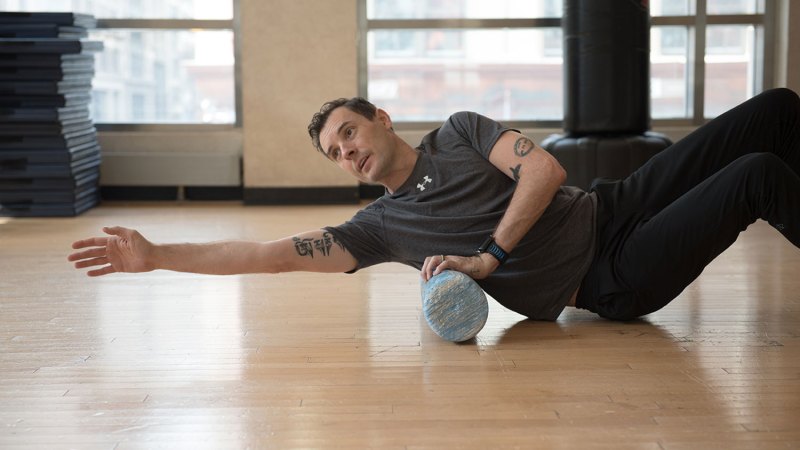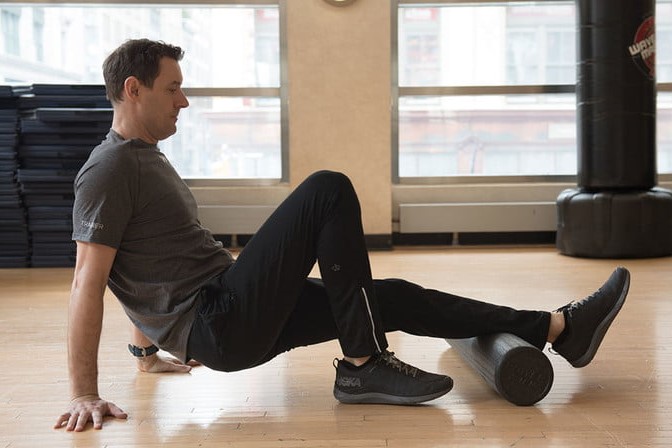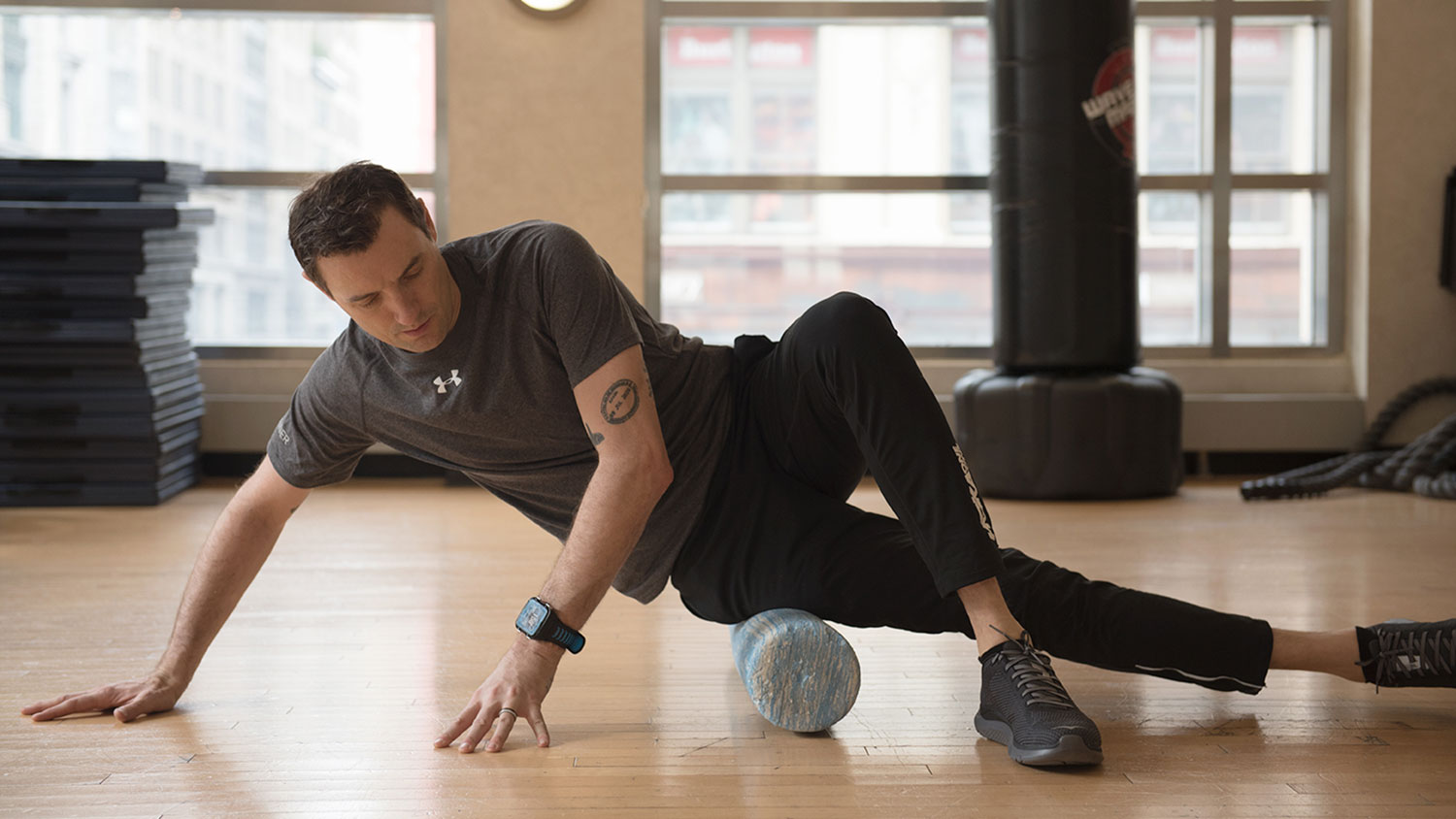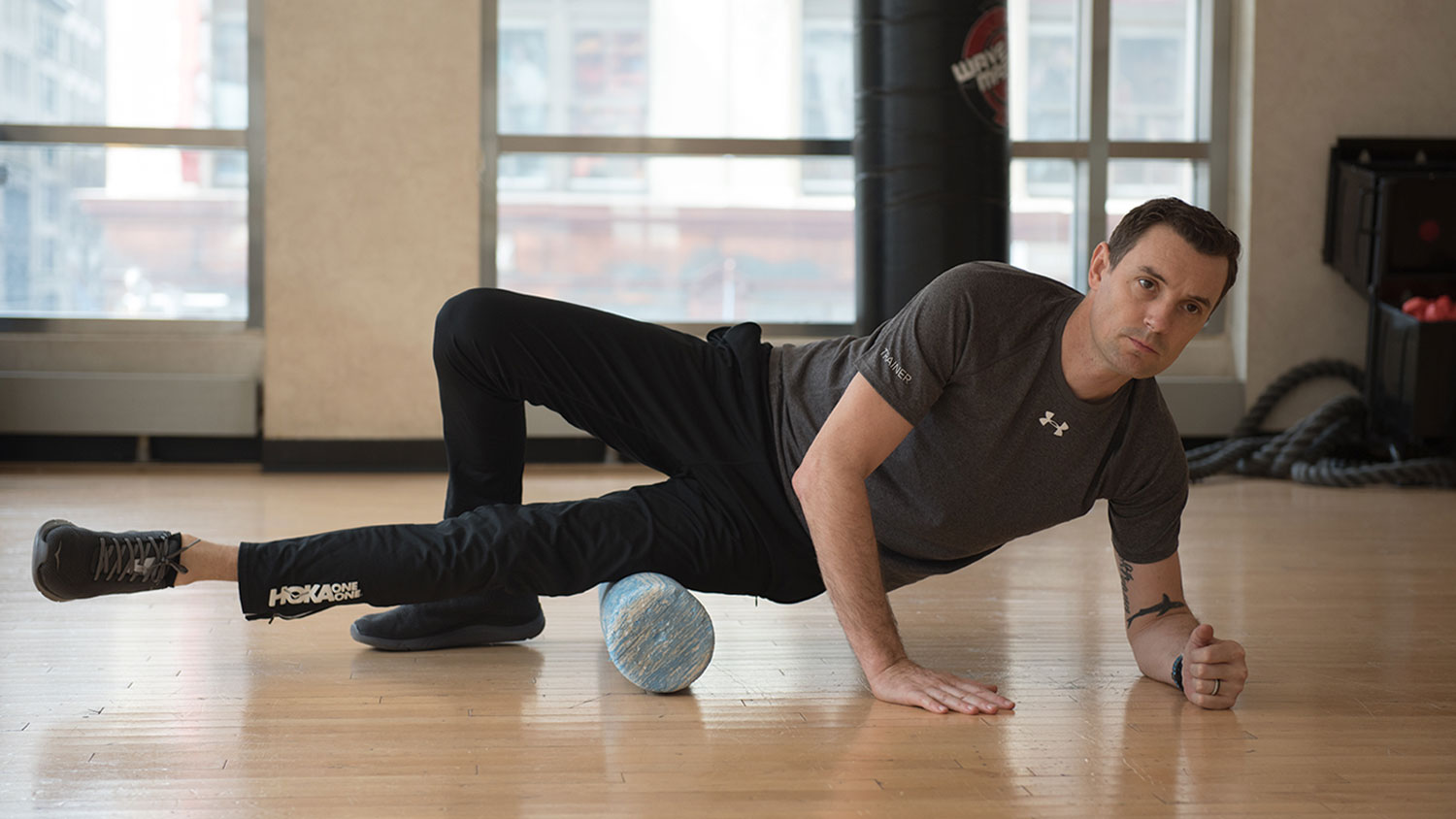
Contrary to their innocent appearance against the backdrop of huge weights and complicated exercise machines at the gym, foam rollers are actually quite powerful tools of self-myofascial release — otherwise known as self-massage — when used the right way. They can help flexibility, boost circulation, reduce soreness, increase range of motion, and remove lactic acid to speed workout recovery. This exercise can be done pre or post-workout, or even at home on off-days. On top of that, foam rollers cost only a fraction of what a sports therapist or deep-tissue masseuse will charge you for a similar experience.
“All men can benefit from foam rolling, whether you’re a weekend warrior or an ultra-marathoner. Stress, diet, and your daily life are also reasons why foam rolling is for everyone. Starting tomorrow with just a couple of minutes of building, the habit and routine will be beneficial for you,” says Bill Elkins, athletic director at New York Health & Racquet Club.

To help your body continue operating at peak performance, we leaned on Elkins to create the following guide to foam rolling. You can use foam rollers to help you warm up before a difficult workout session, cool down and alleviate soreness, and even speed up recovery time. Learn how to use this powerful tool with the help of Elkin’s tips and stretches below.
How to Use a Foam Roller: Exercises

Calves: With the roller placed under the calf, keep your toe pointed toward the sky and roll from the ankle to below the knee. Roll for 30 to 60 seconds and apply pressure as is comfortable. Stack your legs to add pressure.
Hamstrings: Similar to the calves exercise, start with your legs out in front of you and place the foam roller beneath your hamstrings below your glutes. Roll up and down between the back of your knees and your glutes, stopping to linger on tender spots.

Quadriceps: While lying on the stomach, place the roller under your upper thigh and roll down to the top of the knee and back. Roll for 30 to 60 seconds and apply pressure as is comfortable. Stack the legs to add pressure.
IT Band: The IT band runs along your outer thigh from the hip to the knee and is made entirely of connective tissue. It helps to extend, abduct, and rotate your hip and tends to get sore from sitting for long periods of time.

While lying on your side, place the roller under the hip. Roll down to your knee then back up to the hip. Place your hands on the ground for balance. Roll for 30 to 60 seconds and apply pressure as is comfortable. Stack your legs to add pressure.
Upper back: If you tend to hold a lot of tension in your upper back, using a foam roller could provide you with some relief. Simply begin by lying with your back on the foam roller, knees bent and feet on the floor. Brace your core and lift to begin rolling up and down the spine, loosening up any tight spots along the way.

Lats: Recovering from a tough back workout? This stretch can help loosen up the area commonly referred to as the “wings,” located on your back below your armpits. Start by lying on your back at a 45-degree angle with the foam roller resting under your right lat. Bend your legs in a comfortable position, with one lying on the ground and the other foot on the ground with the knee bent. Start rolling from your right armpit down to your mid-back area, focusing on tender areas. Switch sides and repeat.






